Onion-Braised Beef Brisket
This post may contain affiliate links. Read my full disclosure policy.
Prepare a memorable dinner with this incredibly simple, make-ahead beef brisket recipe. It’s a foolproof crowd-pleaser, complete with a French onion soup-like gravy.
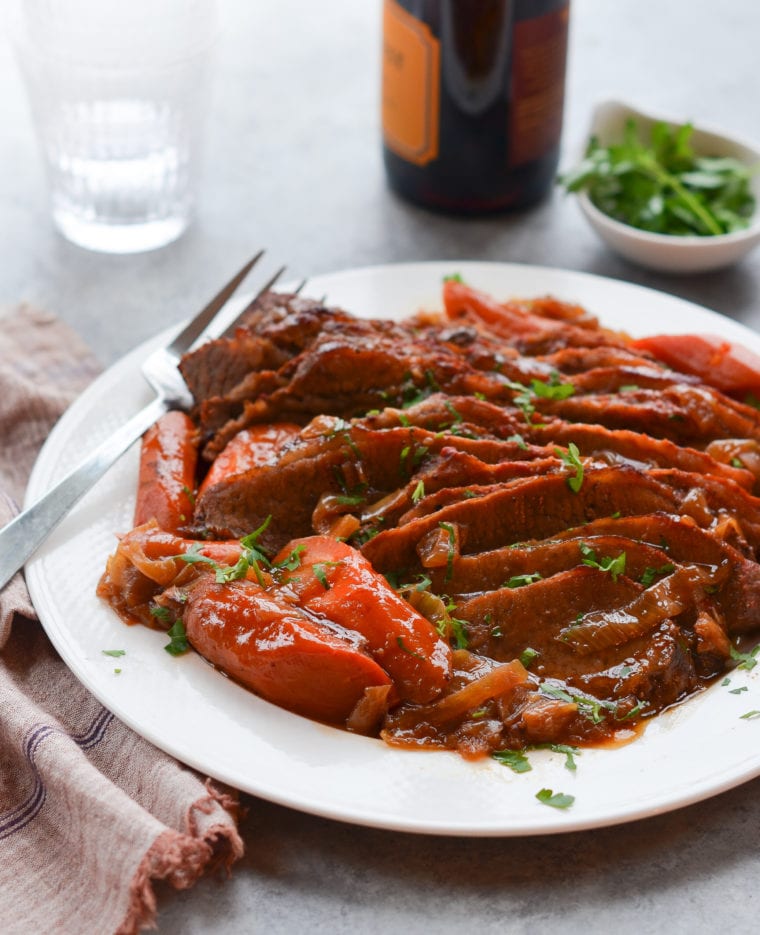
This celebrated beef brisket recipe comes from the late Nach Waxman, owner of the beloved New York City cookbook shop Kitchen Arts & Letters. First published in The Silver Palette New Basics Cookbook in 1989, it is apparently the world’s most Googled brisket recipe. The recipe is surprisingly simple. Unlike all other briskets I’ve made, there’s no wine, stock, or bottled sauces added. Instead, the brisket is cooked on top of a massive heap of onions, which slowly caramelize and release their natural juices, making a rich French onion soup-like braising liquid and gravy.
Table of Contents
“This brisket is AMAZING! It turns out perfect each time. Cutting it, then rearranging the slices back in the pan works great! Such beautiful flavor, delicious gravy, and juicy tender meat. Highly recommended!”
I have made some modifications to the recipe over the years, though the original can still be found here. This dish is ideal for preparing ahead of time, as the flavors deepen when served the following day. For me, it’s a Jewish holiday staple, alongside classics like matzo ball soup, challah, latkes and more. For those observing Passover, the flour in this recipe can easily be substituted with matzo meal to keep it compliant with Passover dietary guidelines.
What You’ll Need To Make Onion-Braised Beef Brisket
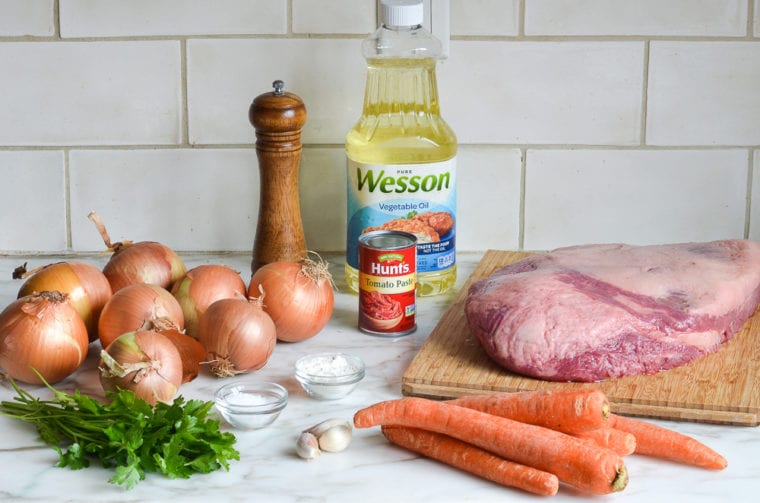
Butchers typically sell two types of brisket: flat cut and point cut. These two pieces together make up a full brisket, a large slab of muscle from the cow’s chest. The point cut has more marbling, while the flat cut (also called first cut or center cut) is lean but topped with a thick fat cap. This recipe calls for a first-cut/flat-cut brisket. Don’t let your butcher trim all the fat off! A small fat cap bastes the meat, adding flavor and keeping it from getting dry and tough.
Step-by-Step Instructions
Begin by seasoning the meat with lots of kosher salt and pepper.
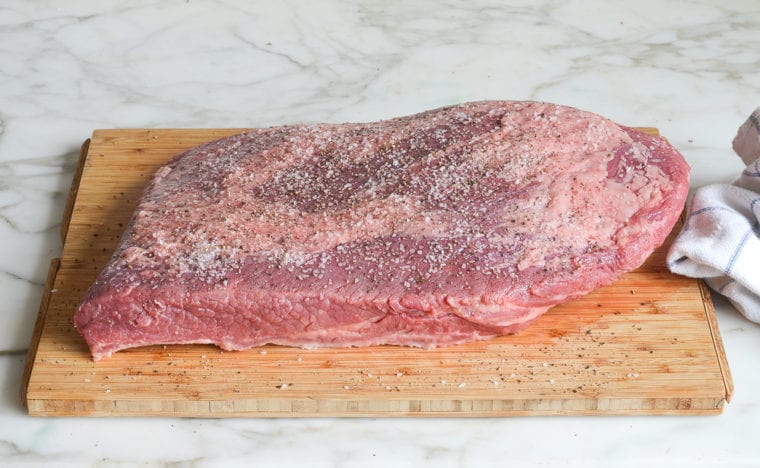
Dust both sides with flour.
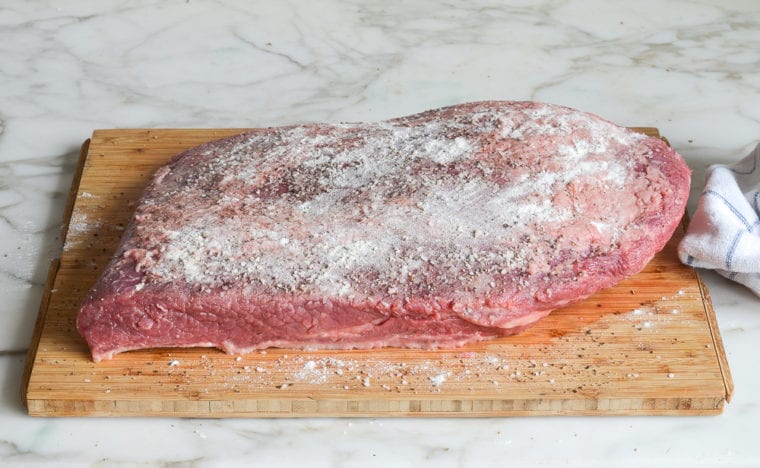
Heat the oil in a heavy flameproof roasting pan or ovenproof enameled cast iron pot until shimmering, then sear the brisket on both sides until brown and crusty in spots.
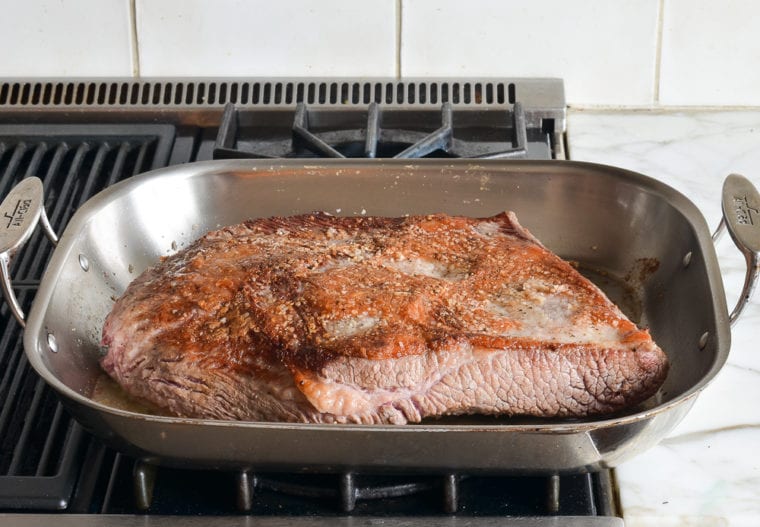
Transfer the meat to a platter, then add the onions to the pan.
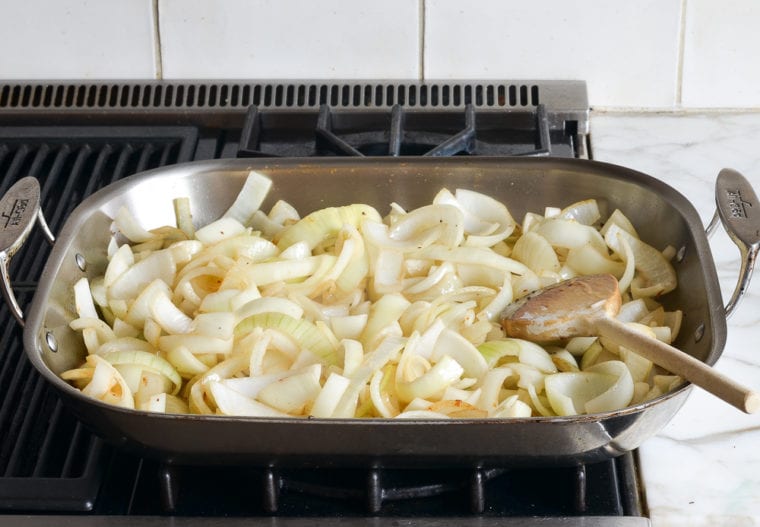
Cook, stirring and scraping up the browned bits from the bottom of the pan, until softened and golden brown, about 15 minutes.
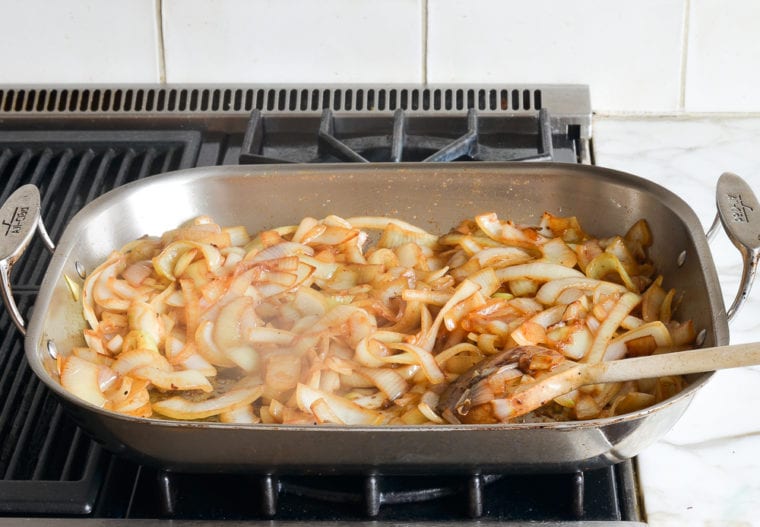
Place the brisket back in the pan on top of the onions and spread the tomato paste on top. Scatter the carrots and garlic around the edges.
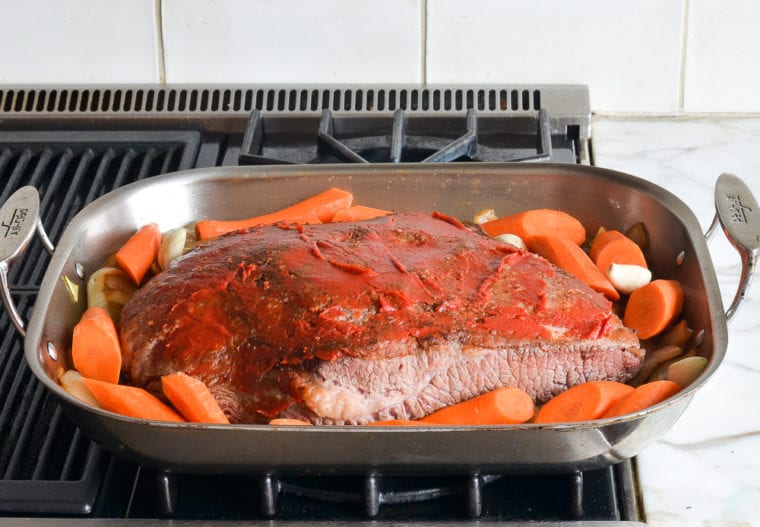
Cover the pan tightly with aluminum foil or a lid, and bake for 1-1/2 hours.
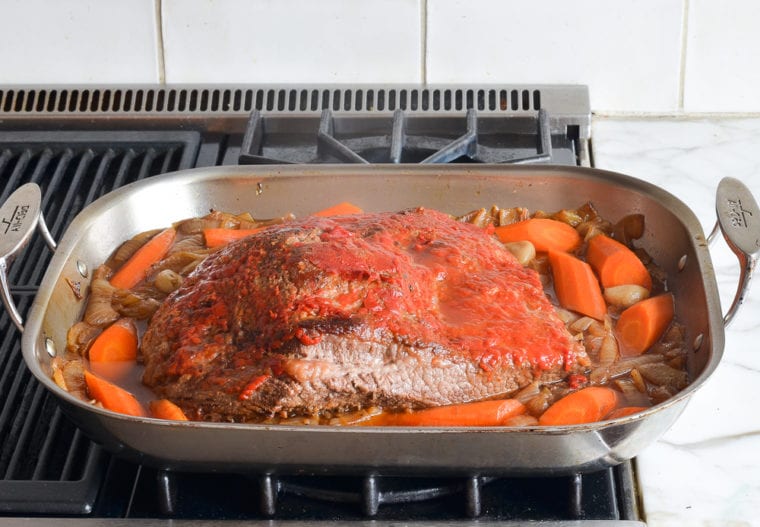
Remove the pan from the oven and transfer the brisket to a cutting board. Using an electric or sharp knife, slice the beef into 1/8 to 1/4-inch thick slices against the grain. It’s much easier to cut at this point than it is at the end.
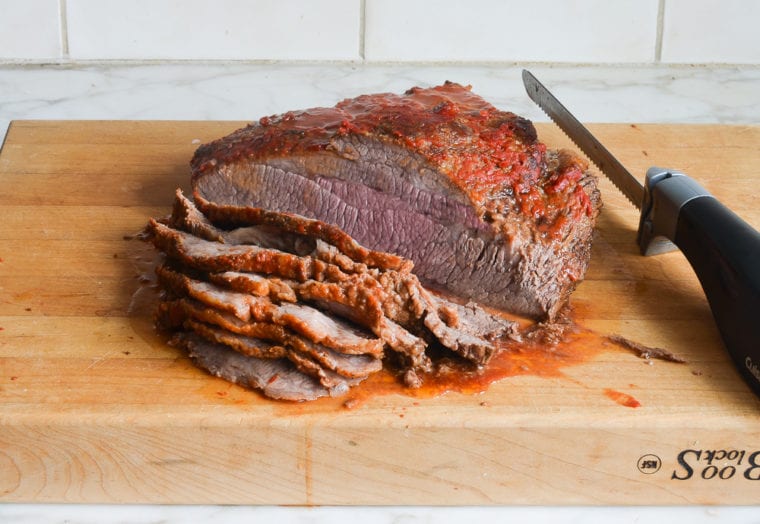
Place the slices back in the pan on an angle, so that the top edge of each slice is showing. Baste the meat with the pan juices.

Cook for a few more hours, until the meat is tender.
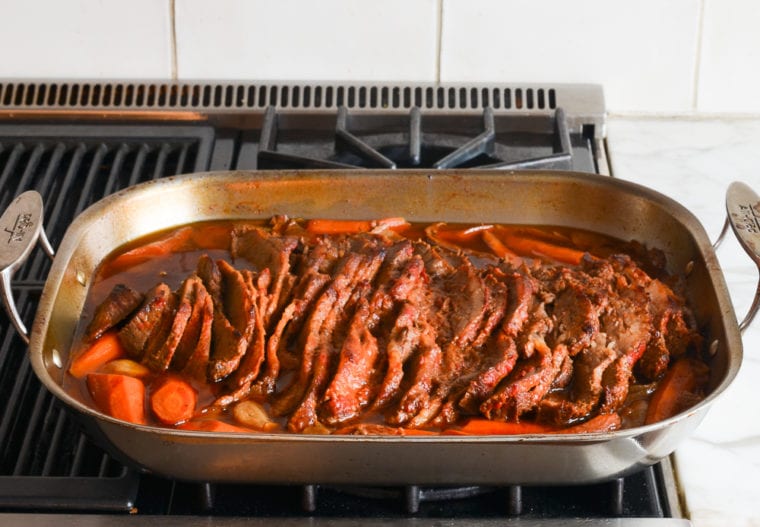
You can serve it right away, but it’s better to refrigerate it overnight and reheat it the next day. It also freezes well.

“This is a 5-star, easily repeatable main dish that is now my go-to special occasion meal for larger groups. Do yourself a favor and make it ahead of time as suggested; enjoy that the cooking is already DONE the day of your dinner, and impress yourself with how truly flavorful and delicious this meal is.”
You May Also Like
Onion-Braised Beef Brisket
Prepare a memorable dinner with this incredibly simple, make-ahead beef brisket recipe. It’s a foolproof crowd-pleaser, complete with a French onion soup-like gravy.
Ingredients
- 1 5 to 6 pound first-cut (or flat-cut) beef brisket, trimmed so a thin layer of fat remains in some spots (do not over trim!)
- 1½ tablespoons kosher salt
- 1 teaspoon ground black pepper
- 2 tablespoons all-purpose flour (okay to substitute matzo cake meal for Passover)
- 3 tablespoons vegetable oil
- 8 medium yellow onions, peeled and sliced ½-inch thick
- 3 tablespoons tomato paste
- 3 cloves garlic, roughly chopped
- 6 carrots, peeled and sliced into large chunks on a diagonal
- Handful fresh chopped parsley, for garnish (optional)
Instructions
- Set an oven rack in the middle position and preheat the oven to 350°F.
- Season the brisket on both sides with the salt and pepper. Lightly dust the brisket with the flour, then shake and turn to coat evenly. Heat the oil over medium-high heat in a heavy flameproof roasting pan or ovenproof enameled cast-iron pot just large enough to hold the brisket and carrots snugly. Add the brisket to the pan and sear on both sides until crusty brown areas appear on the surface, 5 to 7 minutes per side.
- Transfer the brisket to a platter, then add the onions to the pan and stir constantly with a wooden spoon, scraping up any browned bits stuck to the bottom of the pan. Cook until the onions are softened and golden brown, about 15 minutes. (If browned bits stick to the bottom of the pan and start to burn, add a few tablespoons of water and scrape with a wooden spoon to release them.)
- Turn off the heat and place the brisket, fatty side up, and any accumulated juices on top of the onions. Spread the tomato paste evenly over the brisket, then scatter the garlic and carrots around the edges of the pan. Cover the pan very tightly with aluminum foil (preferably heavy-duty or two layers) or a lid, then transfer to the oven and cook for 1½ hours.
- Transfer the brisket to a cutting board and, using an electric or very sharp knife, slice the meat across the grain into approximately ⅛ to ¼-inch-thick slices. Return the slices to the pan, overlapping them at an angle so that you can see a bit of the top edge of each slice. The end result should resemble the original unsliced brisket leaning slightly backward. Cover the pan tightly and return to the oven.
- Lower the heat to 325°F and cook the brisket until it is fork-tender, 1¾ to 2½ hours, or longer if necessary. The brisket is ready to serve with its juices, but it is even better the second day. (Note: If the sauce seems greasy, transfer the meat and vegetables to a platter and cover with foil to keep warm. Pour the sauce into a bowl and let sit until the fat rises to the top. Using a small ladle, spoon out the fat. Pour the skimmed gravy back over the meat.)
- Note: Nutritional information was calculated for a 5-pound brisket.
- Make-Ahead/Freezer-Friendly Instructions: The brisket can be made up to 3 days ahead of time and refrigerated. Reheat the brisket in a 300°F oven until hot, about 45 minutes. The brisket also freezes well for up to 2 months; defrost in the refrigerator 2 days ahead of time.
Pair with
Nutrition Information
Powered by ![]()
- Per serving (10 servings)
- Calories: 726
- Fat: 55 g
- Saturated fat: 21 g
- Carbohydrates: 14 g
- Sugar: 6 g
- Fiber: 3 g
- Protein: 42 g
- Sodium: 844 mg
- Cholesterol: 213 mg
This website is written and produced for informational purposes only. I am not a certified nutritionist and the nutritional data on this site has not been evaluated or approved by a nutritionist or the Food and Drug Administration. Nutritional information is offered as a courtesy and should not be construed as a guarantee. The data is calculated through an online nutritional calculator, Edamam.com. Although I do my best to provide accurate nutritional information, these figures should be considered estimates only. Varying factors such as product types or brands purchased, natural fluctuations in fresh produce, and the way ingredients are processed change the effective nutritional information in any given recipe. Furthermore, different online calculators provide different results depending on their own nutrition fact sources and algorithms. To obtain the most accurate nutritional information in a given recipe, you should calculate the nutritional information with the actual ingredients used in your recipe, using your preferred nutrition calculator.

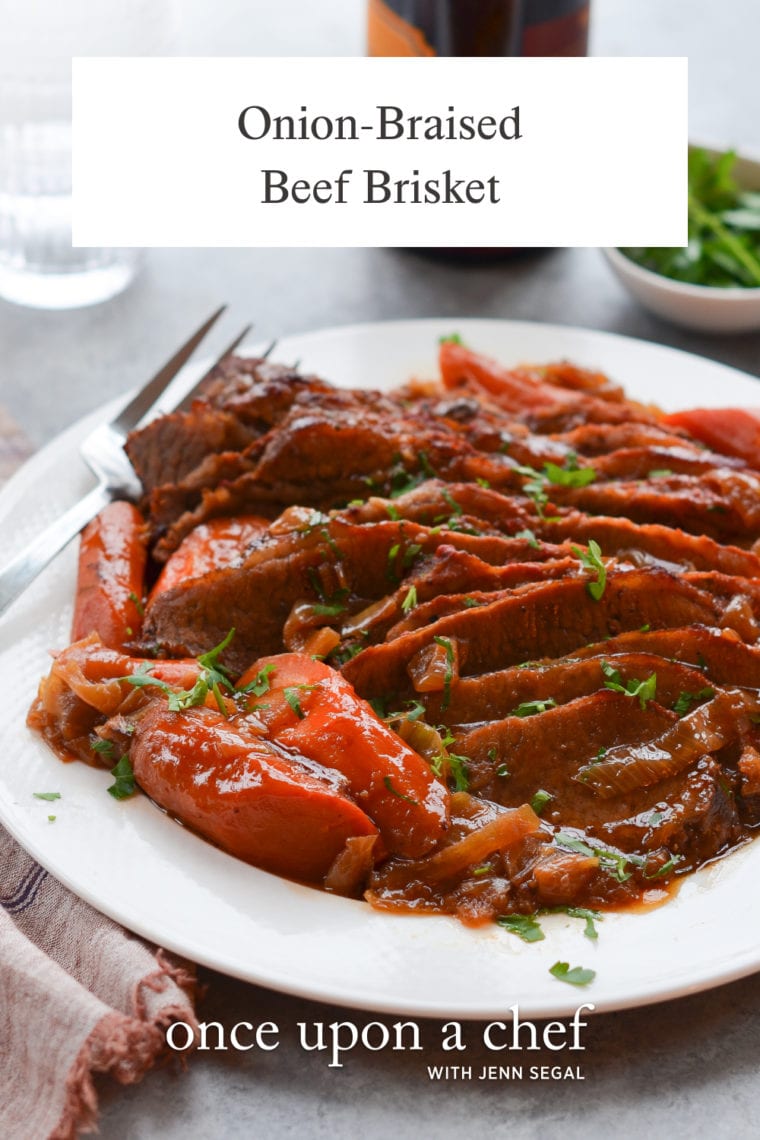

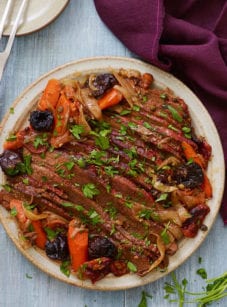
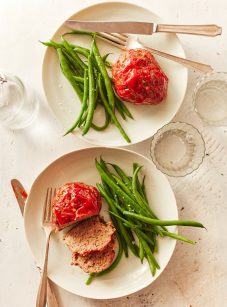

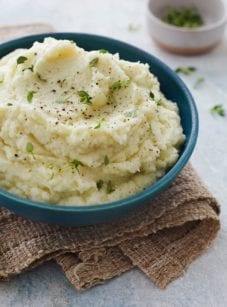
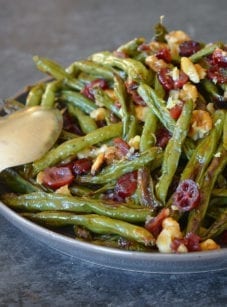
Hi Jenn-
Not sure if you saw my comment but I can’t find it now. I took out the sliced brisket from the oven that I cooked for 2 hours (after slicing) and it seems a little tough. I let it fully cool and now in refrigerator. Is there anything I can do to make it more tender?
Hi Suzanne, hopefully, once you put it back in the oven and let it cook a bit longer (to get it hot enough to serve), it will be more tender. Every once in a while, though, you’ll get a cut of brisket, that’s just more tough. Fingers crossed that that’s not the case here!
How would you adjust the cooking time if I made two 2 1/2 – 3 lb briskets? Would I lay them side by side or stack one on top of the other? Thank you for all your fabulous recipes.
Hi Ruth, The two separate pieces may take slightly less time, but the difference will be minimal so I wouldn’t worry about it (and I would lay them side-by-side). Hope you enjoy! 🙂
I’m usually not into stews or roasts, but this was really delicious! I even forgot to put salt and it actually didn’t even need the salt. I also used chuck roast because I didn’t have brisket and it worked out great! Definitely a keeper!
Jenn I’m cooking a 7 lb brisket for passover. I need to adapt your recipe for the brisket. Any suggestions? Should I add the carrots after I slice it?
Thanks Ken
Hi Kenneth, a 7-lb brisket may take a bit longer, but I’d check it for tenderness at the time the recipe specifies (and I’d put the carrots in the roasting pan according to the recipe). Hope everyone enjoys!
Jenn, Thanks for the reply. When I sliced the brisket after 1.5 hours cooking I lost alot of juices to the cutting board. What do you think about cooking it whole, refrigerating over night and slicing the next morning?
You’re right in that juices will be released from beef if you cut it while it’s still hot, but because you’re cooking it using a very slow method, you don’t lose the juiciness. That said, if you’d prefer to fully cook it before slicing, you can, but cold brisket is much harder to slice.
Hi, Would this work with a 2.5 lb pork brisket?
Hi Lynne, I think it would, though the cooking time is likely different. (You’ll know it’s done when it’s fork-tender.)
Jenn, after wrestling w/a huge brisket that barely fit in a broiler pan, I bought a 16” cast iron skillet specifically for this, we LOVED the recipe that much!
Another fabulous winner, thank you!
My father was born in Berlin, Germany and came to England in 1938 as a refugee. He always cooked brisket this way but did not add salt to the beef because kosher meat is already salted. Slice the meat, then put it back in the gravy, when it is half cooked. That way you get nice slices when it is fully cooked. We serve it over anything that will absorb the gravy! Cous cous is great, rice, mashed any kind of root vegetables.
Hi, Has anyone used a tinfoil pan for this recipe? I’ve made it twice , once in a Le Creuset heavy roaster and another time in a dark pan. Taste was incredible but had very little gravy. I’m thinking it’s the pans?… Cuz it’s not the meat. ( Could be the cook 🙂
I just did, and it was delicious and has plenty of juice. Only thing I did differently was browning the brisket and cooking the onions in a large sauté pan. I had to cook the onions in 2 batches.
I found a metal pan the just fits the meat but there would be no room for the vegetables. Can I brown it in the metal , cook the onions and then transfer to a larger Pyrex for the remainder of the time in the oven?
Yep that will work!
RE overnight refrigerator storage: I place the meat and veg in one container … and the sauce in another. The next day, the sauce container has the solid fat that has risen to the top. What’s your recommendation for dealing with the fat? Skimming it all off and disposing of it? Using some of it when re-heating the meat and vegetables? Thank you.
Hi Francis, I would skim some but not all of it off. Enjoy!